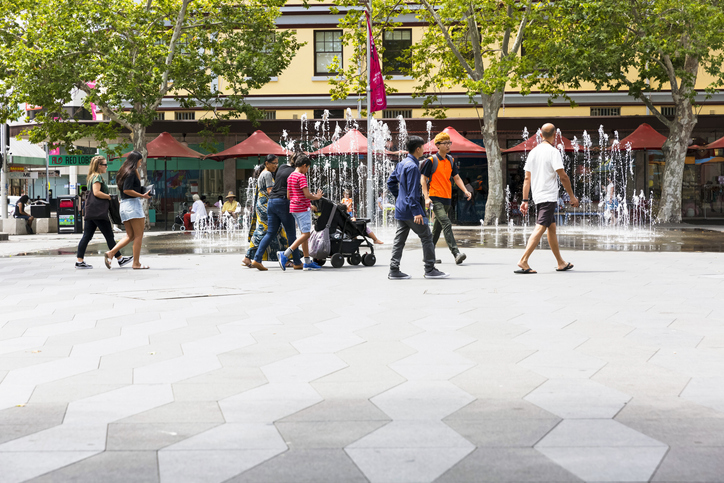Parramatta Council will boost greenery and shading across the city as part of broader efforts to drive down temperatures in the city by up to two degrees.
New research spearheaded by Parramatta Council and UNSW CRC for Low Carbon Living (CRCLCL) used 3D imaging to examine air and footpath temperatures to locate urban heat islands throughout the city and recommend tailored cooling solutions.
The cutting-edge technology enables council to ‘visualise’ the impacts of the installation of shading structures, greenery and water features on these heat spots.
Installing cooling structures such as these can improve comfort by 50-60 per cent, according to the study.
Situated in the city’s west, temperatures in Parramatta soar well above average in the hotter months, often triggering heatwaves and urban heat islands, with the study finding some asphalt surfaces were reaching above 50 ̊C in unshaded areas.
The research also found the parts of the city closest to the Parramatta River to be one degree cooler than the other parts of the city, cluing the city into the factors influencing the city’s temperature.
Redesigning the city
The study will inform a $4.3 million revamp of Phillip Street, a key thoroughfare in Parramatta, which will see the installation of more trees, wider footpaths and misting units and in the longer term, cool pavements.
City of Parramatta Lord Mayor Cr Andrew Wilson said the study would help improve the liveability of the area by enabling council to effectively manage the city’s hotspots.
“Given Western Sydney can be 5-10°C hotter in the middle of summer than suburbs in Sydney’s east, it is important for us to consider ways in which we can address and reduce the impact of urban heat,” he said.
https://youtu.be/W-sYgXu44r8
The research, led by CRCLC researcher Professor Mat Santamouris, is the first of its kind in Australia to use 3D imaging.
“By pinpointing the hot spots through our intense monitoring over a period of time and gathering other relevant data we could then deliver the City of Parramatta with heat mitigation scenarios specific to Phillip Street,” Professor Santamouris said
Centre Chief Executive, Professor Deo Prasad hopes that the tool will be used by other councils across Australia to help guide urban planning as councils grapple with rising temperatures.
“This tool can be used by people without any technical background. You simply click to explore development alternatives and view the potential of mitigation options to reduce the impact of urban overheating.”
Comment below to have your say on this story.
If you have a news story or tip-off, get in touch at editorial@governmentnews.com.au.
Sign up to the Government News newsletter




I’m very hot blooded and so hate summer, well my work is moving from the cool city to hot Parramatta at the end of this year and I’m not looking forward to heat so reading about this I say go for it.
Unfortunately, the horse bolted a long time ago on Parramatta and Hot Suburbs, a bit of commonsense goes a long way and you don’t need multi million dollar studies to tell you that ripping out trees and greenery and covering it up with concrete in the form of high rise towers, granny flats and duplexes everywhere increases temperatures and contributes to the heating of our planet. Yes we need better planning and the use of technology to help reduce the damage that has been done but we need to place controls over this unsustainable development and our long term death wish.
The green and blue grids as per Greater Sydney Commission will go some way in addressing this but the lack of action on building regs (just white roofs would have been a start, never mind double glazing) will mean we will spend much more time and money on staying cool than we need to.